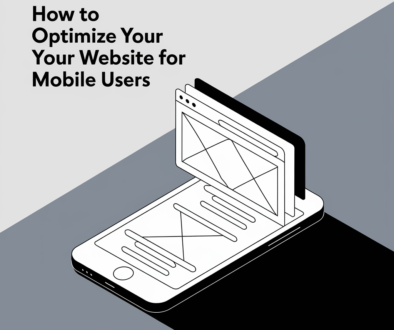Creating an E-Commerce Website That Sells
Designing an effective e-commerce website is crucial for converting visitors into customers. A well-crafted online store not only showcases products but also provides a seamless shopping experience that encourages purchases. Here are key tips for designing e-commerce sites that sell, focusing on layout and functionality.
1. User-Friendly Navigation
- Simple Menu Structure: Create a clear and intuitive navigation menu that categorizes products logically. Consider using dropdown menus for subcategories to avoid clutter.
- Search Functionality: Incorporate a prominent search bar that allows users to quickly find specific products. Include filters and sorting options to refine search results based on categories, price, and other attributes.
2. Compelling Product Pages
- High-Quality Images: Use high-resolution images that showcase products from multiple angles. Implement zoom functionality to allow users to see details up close.
- Informative Descriptions: Write clear and engaging product descriptions that highlight features, benefits, and specifications. Use bullet points for easy readability.
- Customer Reviews: Integrate customer reviews and ratings to build trust and provide social proof. Positive feedback can significantly influence purchasing decisions.
3. Effective Call-to-Action (CTA)
- Clear CTAs: Use prominent and visually distinct buttons for actions like “Add to Cart” and “Checkout.” Ensure these buttons stand out through contrasting colors and strategic placement.
- Encourage Urgency: Incorporate phrases like “Limited Stock” or “Sale Ends Soon” to create a sense of urgency and encourage customers to take action.
4. Streamlined Checkout Process
- Guest Checkout Option: Allow users to check out without creating an account. This reduces friction and increases the likelihood of completing a purchase.
- Progress Indicators: Include a progress indicator during the checkout process to inform users how many steps remain, which can help reduce cart abandonment.
5. Mobile Optimization
- Responsive Design: Ensure your e-commerce site is fully responsive, providing an optimal viewing experience on mobile devices. Many consumers shop using their smartphones, so mobile optimization is critical.
- Tap-Friendly Elements: Design buttons and links that are easy to tap on mobile screens. Avoid clutter and ensure that interactive elements are spaced appropriately.
6. Fast Loading Times
- Optimize Images and Code: Compress images and minify CSS and JavaScript files to improve page load speeds. A slow website can lead to high bounce rates and lost sales.
- Use Content Delivery Networks (CDNs): Implement CDNs to distribute content efficiently, reducing load times for users regardless of their location.
7. Incorporate Trust Signals
- Security Badges: Display security badges prominently on your site to assure customers that their data is safe. Include SSL certification indicators during checkout to enhance trust.
- Return Policy Information: Clearly outline your return and refund policies to alleviate concerns. A transparent policy can encourage hesitant shoppers to complete their purchases.
8. Integrate Social Media and Sharing Options
- Social Media Links: Include links to your social media profiles to encourage engagement and build community. This can also help drive traffic back to your site.
- Share Buttons: Add social sharing buttons on product pages to enable customers to share their favorite items easily. This can help increase visibility and attract new customers.
Conclusion
Creating an e-commerce website that sells requires a thoughtful approach to design and functionality. By focusing on user-friendly navigation, compelling product pages, a streamlined checkout process, and trust-building elements, you can craft an online store that not only attracts visitors but also converts them into loyal customers. At DevsDigital, we specialize in designing effective e-commerce websites tailored to your business needs. Contact us today to start building your online store!


